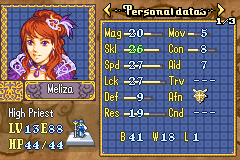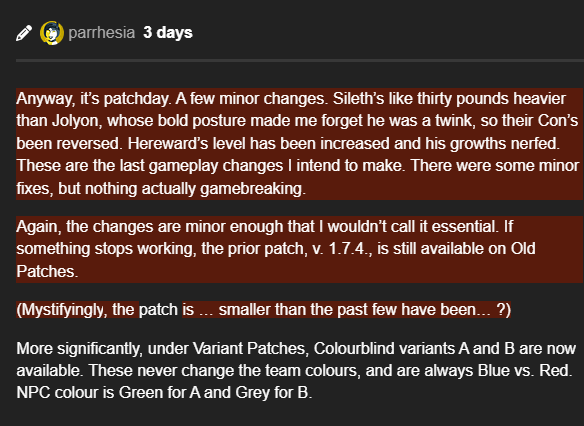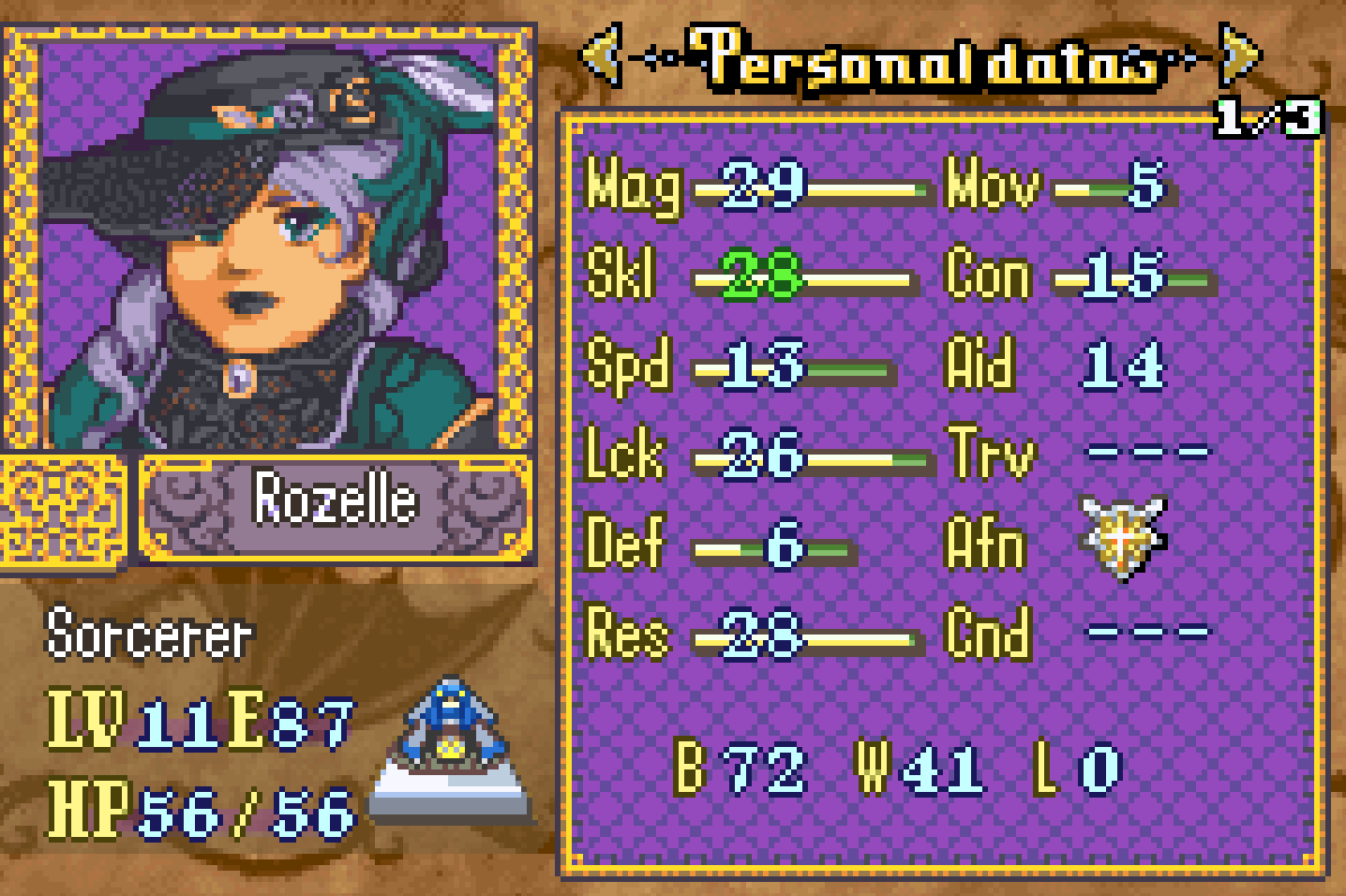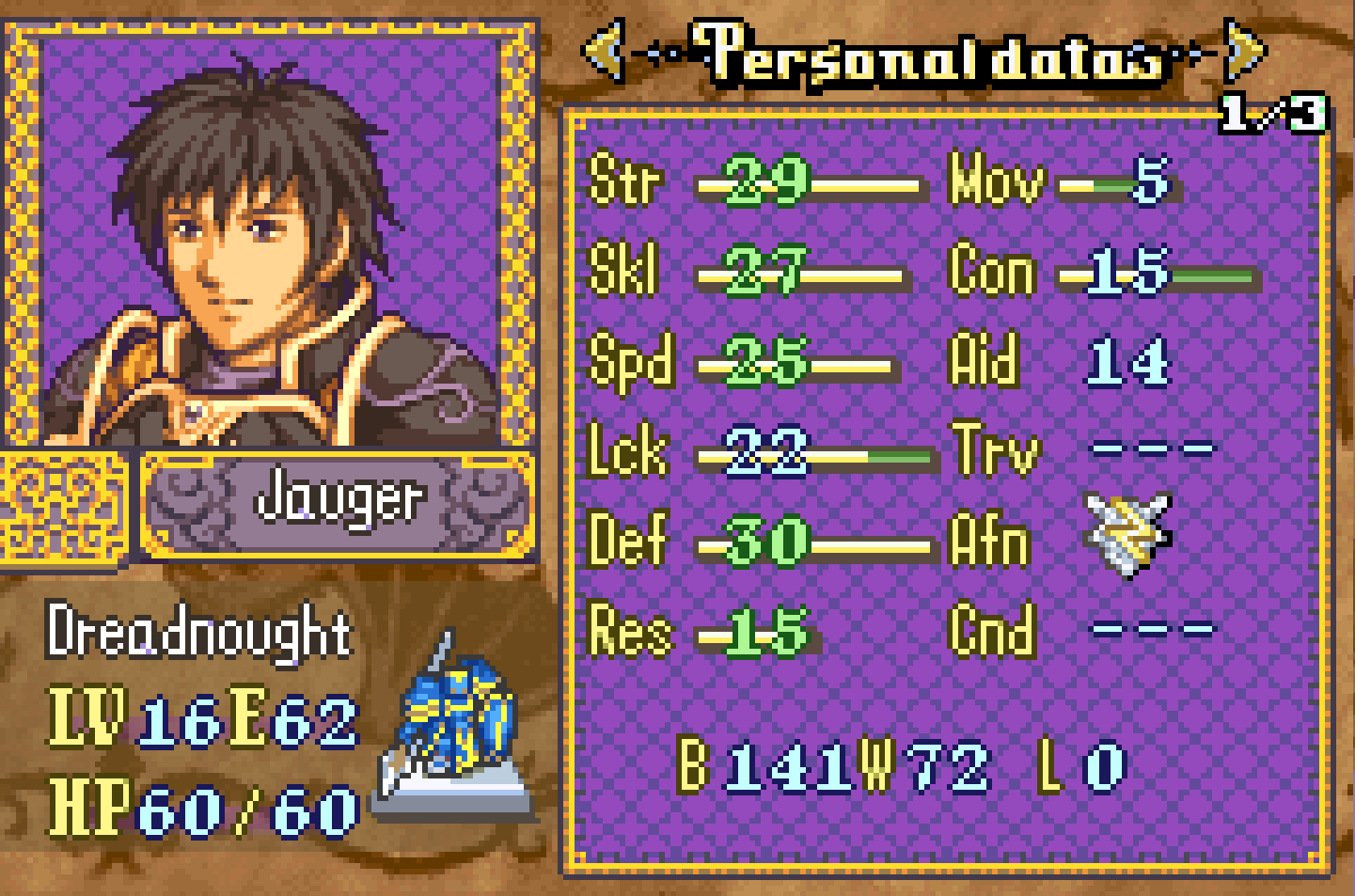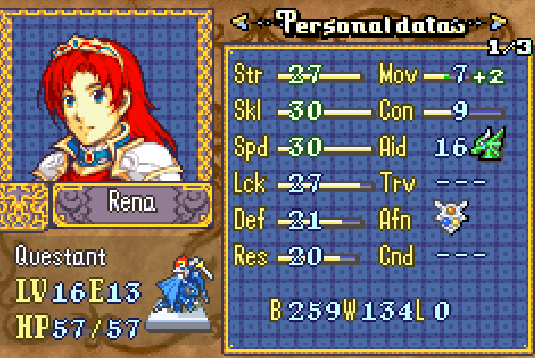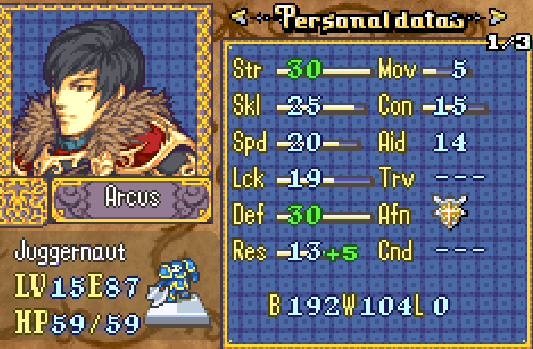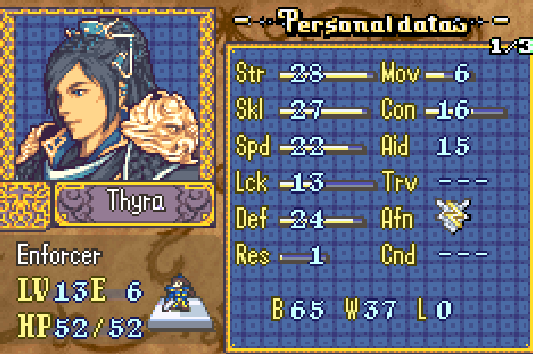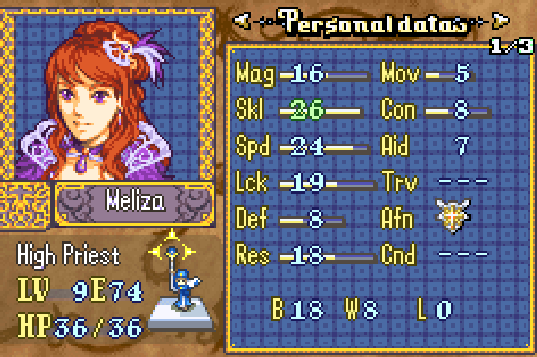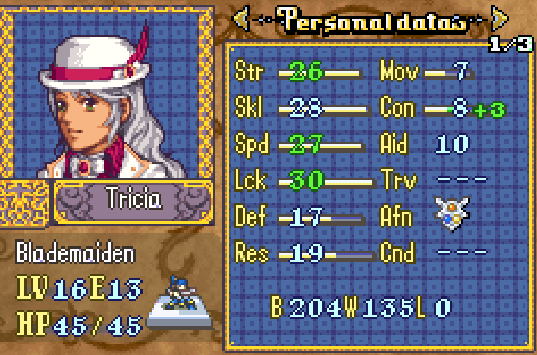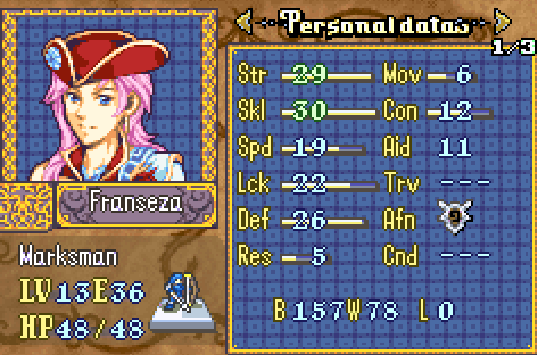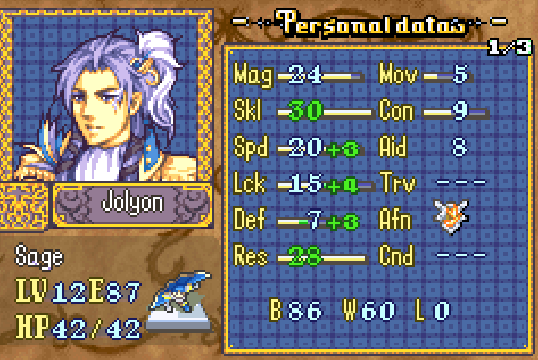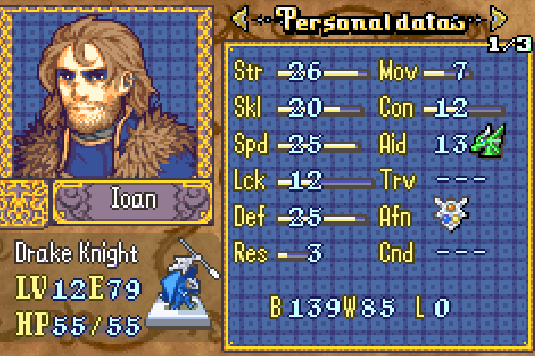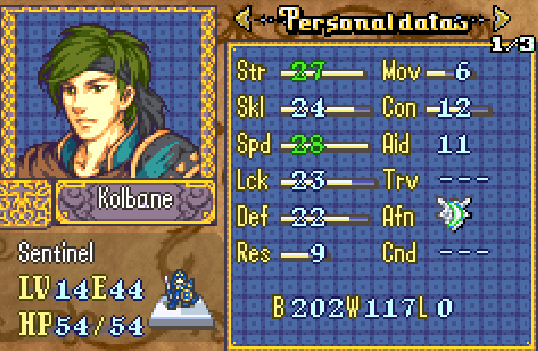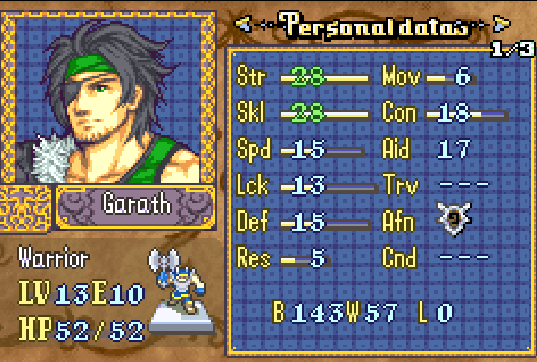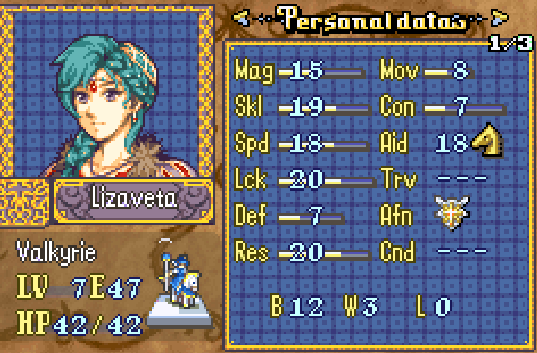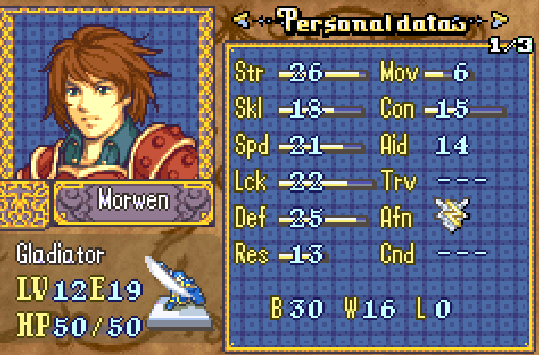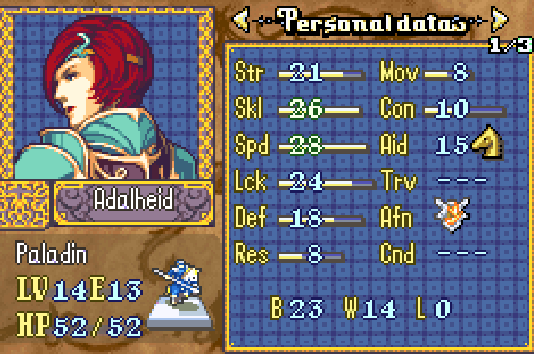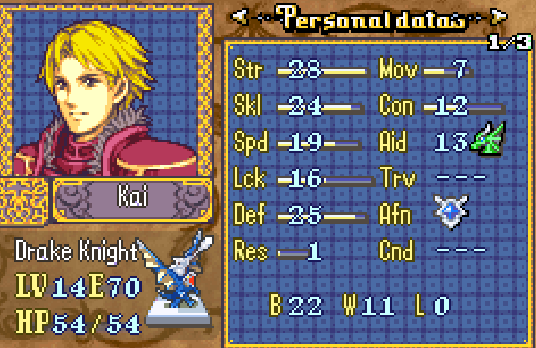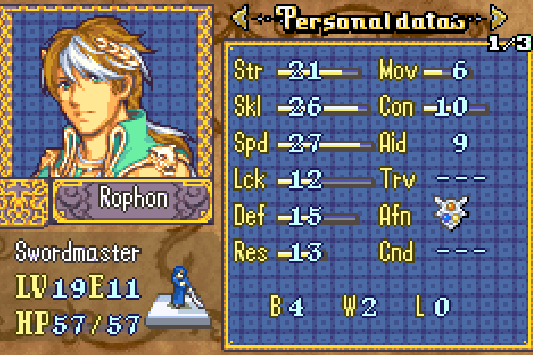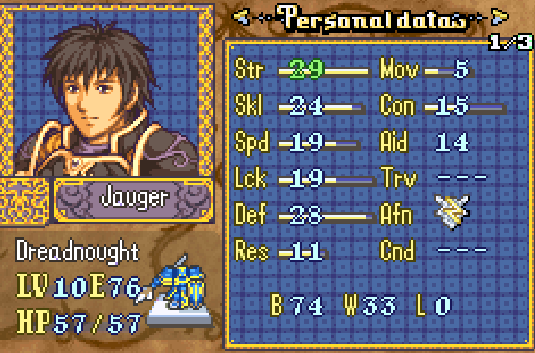Disclaimer: I played the initial release of Do5 definitive edition when Act 1/2 were the only acts present. I reviewed that version over a year ago, so the contents of this post will largely focus on Acts 3/4 and my overall thoughts. I went Musain for both my last and current runs.
Gameplay
Typical to most Fire Emblem games/hacks, Do5’s maps kick up in length and complexity once you exit Act 2. While a majority of the early maps are spent on the back foot and being forced into ever more precarious situations, the later maps are grand, pitched battles in which you gain ground and finally have your goal within reach. Chapters 20 and 25 are my favorite in the hack: both open-field massive setpiece battles with 4-5 enemy commanders that need to die. It reminds me of my favorite moments in DoW (more on that later).
Complementing these larger maps is a greater variety in anti-turtle incentives. Early maps relied on death squad reinforcements from the rear to force forward momentum; while that’s still true past the midpoint, there are more villages to save and thieves to stop. My favorite anti-turtle is probably the one in Chapter 18. Enemies hidden in locked rooms opened by key-bearing reinforcements is a cool concept, and there are many different ways of dealing with them. You can preemptively open the doors to deal with them on your own terms, you can ignore them entirely and deal with the consequences later (never, if you’re fast enough), or tactically snipe the key-bearers to keep the doors locked.
Endgame was marvelous. The dragons were a very different challenge from previous bosses and I enjoyed finding ways to kill them in two rounds of combat. Fleurre wasn’t especially difficult as a final boss but I imagine I wouldn’t be saying that if I didn’t stack my team with so many mages. I gave the boss kill to Severin for thematic reasons and barely had to go out of my way to set it up for him.
Sibyls and Blademaidens
Between Drums of War and Dream of Five, it’s clear that Parr’s class design mythos is aesthetically reminiscent of vanilla FE8. There are no mixed physical/magic classes, existing classes tend to stick to vanilla stat spreads, and tier 2 classes added with the branching promotion system have been retooled into being prepromote-exclusive. The big changes are found in the little details: longbows are tiered and infantry-exclusive, ranged infantry are slower to move than melee infantry and fliers are slower to move than cavalry, and enemy quality is turned up to reduce mindless juggernauting. The system is practical, if not very novel.
I - famously - love mages and hate staffers, and am often disappointed when promoting a mage plops a heal staff into their inventory without expanding their offensive toolkit. Obviously I understand that staves are an important utility and provide role compression, but does every mage have to become a healer on promo? On any given Fire Emblem team I’m rocking 3-4 offensive mages, the staff market is oversaturated.
Which is exactly what I find so enthralling about sibyls. Trading staff access for dark access and an extra point of movement may seem a fair trade on paper, but to me it’s an unequivocal improvement. Six movement allows sibyls to keep pace with the other infantry, and being able to attack melee infantry from range without having entered their threat area is massive. Dark access is similarly very important, as wielding the combined Cometfall/Luna/Enervation greatly expands the positive matchups the class has. In many instances I had Cothiva able to enemy phase formations that Amelia or Gabriel wouldn’t have been able to handle.
It’s not like the extra tools sibyls gain makes them overpowered, either. Enemy Sibyls may be fast and strong, but lacking anima access means they cannot reach 1-3 range and are thus vulnerable to longbows. This is a weakness present for the player sibyls are well - even if Cothiva could one round a dreadnought with Cometfall, she was taking a significant counter if the dreadnought was sporting a spear or Francisca. Cothiva is far and away the unit I had the most fun using in Do5, and that’s entirely due to her class. It fulfills an offensive niche not found in vanilla, and I would love if they returned in future hacks.
Blademaidens similarly fill a niche not present in vanilla, but theirs is a much more simple one. They’re physical units with resistance but without the bow weakness of pegasus riders. For someone like me who relied on glass cannon mages as my offensive backbone, enemy blademaidens forced me to adopt a different strategy. Usually that strategy’s name was Kolbane or Jauger.
If I ever play Onduris route I have to train Tricia.
Endgame Units
Rena is incredible. My one regret is not grinding axe rank on her with the glass axe, but she was still able to excel with strong swords like the Flametongue. Her speed is monstrous and with the Medraut she’s fast enough to double every single enemy in endgame. Flier movement is also flier movement, and her supply access meant I had the flexibility of a fifth inventory slot for turns she didn’t need to have the Hrethe Bracer on her person.
Arcus. Wow. He got incredibly speed screwed throughout Musain and I was considering dumping him in Act 3 (he sat out a couple maps when deployment was tight) but he ended up sticking around. While his speed never really got fixed he was still able to eat hits and chunk guys with Mioritza/Brutal Axe.
Earlygame mage girl. Basically deleted any enemy she looked at, which only became easier once Galehault entered her hands. 5 movement and limited 1-3 range does suck, but with her combat stats it barely mattered.
Jesus christ. Jesus fucking christ. What if Amelia had movement. What if she had access to Cometfall and Luna. Cothiva’s one weakness is a complete lack of 3 range compared to Amelia, but again her movement and sheer offense makes up for it.
The last member of the early mage triumvirate, and by far its weakest link. But despite his bad speed and 5 move, he was still able to contribute a lot. 17 speed is more than enough to double brutal weapon-wielding enemies and 30 magic is MORE than enough to one round them even with the basic Flux. Certainly more limited than Amelia or Cothiva but still a valuable member of the company.
- 2 ambrosial fruits
- 2 inner fires
- 1 swift feather
- 1 plump wagyu
- 4 horseshoes
- 1 divine aegis
- 2 holy symbols
- 1 dead Fluerre by his own hand
She used staves, I suppose. Chipped a few armors/cavs, rescue dropped. Very unglamourous unit but still important. I liked her boss quote with Tanaquil in Chapter 25.
Technically shouldn’t be included since she was benched in endgame for Sorcha, but she gets an honorable mention anyway. Worse than Gabriel for sure but she still carved out a niche with her prf.
The last magic user in the company for endgame and a damn strong one at that. Chrysophylax is an instant 1-3 delete button but I admit I didn’t really need it thanks to all the other magical firepower on my team. Nonetheless I thoroughly enjoyed her as the hack’s final recruit.
Now on to physical units. Jauger was far and away my strongest unit once he got off the ground, which was made extremely easy thanks to Hearty Hello. Hearty Hello in general is such a potent tool, allowing him to turn the tables on enemy mages.
Good god. Absolutely ludicrous combat with lances. He was my go-to answer for swordmasters and blademaidens whenever Jauger was doing Jauger things elsewhere. Honestly I was shocked at how fast he came into his own as a unit. Truly, Lumi’s favoritism only makes him stronger.
The surprise sleeper hit of Do5 for me. His speed seemed super middling at base, but enemy mage speed is even more middling and being able to reliably kill them without eating a counter is something he does better than anyone else. Countering fliers is also immensely helpful and he does that better than any other bow user.
Thyra. Also insane. Honestly she didn’t really excel in any class matchups, but her stats and prfs meant she was an jack of all trades against any physical unit. She plugged gaps in my formations excellently and I’m happy for her and Kolbane.
Eh. Kai was fine. His stats are good but I never really bothered to give him a proper inventory. I only chose him over Claudiya because I had enough mages and I would rather see Tamara in the company of her wife. Nonetheless he did smack enemies around decently.
Honestly Adalheid was a little worse than I expected. Her combat performance is carried by Nithhad, which runs of durability uncomfortably fast. I had to spare a Hammerne use on it, but despite that Adalheid saw a lot of use in the last stretch of the hack.
Probably the worst combat unit that ended up sticking around. Like Adalheid, carried by her prf, although I’d say she was slightly less reliant on the Ivory Ranseur than Adalheid the Nithhad. But since when was having a third flier a liability?
Bard. Enough said.
Cuthbert Farrell
If you had told me in the initial release of Do5 definitive edition that Cuthbert Farrell would be my favorite antagonist in the hack, I would not have believed you. But here we are. Act 3 develops Farrell in so many minute ways that altogether develop him into an extremely well fleshed-out and layered antagonist.
First of all, he’s legally right. He may be a conniving, arrogant, self-serving, neglectful asshole, but he’s right. When Rena rallies the people of Aukema under the pretense of restoring the crown to its rightful position of power, Farrell is right to decry her as a pretender. The mutiny of the Ivory Quill hinges on Sheila being taken by Rena’s lies and Kearney not believing her, and the latter is killed for being on the “right” side of the debate.
But that’s not the only layer to the conflict. Farrell’s staunchest loyalists are those unencumbered by personal honor, who detest the old order’s corruption, who buy into his promises of change. Regardless of how many of his promises he planned to act on, Farrell represented a dissolution of the old status quo. Meanwhile Wyclif, the classist and traditionalist earl who beats up a widow in the street, marches under Rena’s banner for the sake of keeping control over his holdings. Until Rena defies Varkade to fight for what she truly believes in, Farrell has the (slight) moral high ground.
That’s of course not to mention Farrell’s personal failings. Despite having a slight moral and technical justification for his actions he’s still a conniving, arrogant, self-serving, neglectful asshole. He abandoned one of his daughters and groomed the other, and all of his plans for improving Aukema end with him in complete control of it. He let bandits have the run of his territory and led thousands of soldiers to die for a cause he long knew was lost. He deserved no better death than by Sorcha’s hand.
And yet, despite his atrocious actions, there remain human elements within him. He genuinely cares about his daughters, enough to order Adalheid’s surrender and regret leaving Sorcha to die. Even if his conquest of Aukema was for personal ambition, he did believe he was capable of throwing out the old guard and enacting change. When he confronts Rena, his final words to her are not of petty vindictiveness, but relief that at least her rule will be better than what came before. Cuthbert Farrell is not a good man, not by a long shot, but nor is he an evil man. His motivations do not stem from an inherent desire to cause misery or achieve his own ends at the cost of everyone else. He’s just a deeply flawed human being who acted according to his beliefs and dealt with the consequences of them.
Fleurre Domremie
Oh god. Um.
Where do I begin?
I loved Musain’s roster of over-the-top heroes and villains playing out an exaggerated tale of revolution and liberation. Jolyon, Meliza, Corbeau, Severin, Eudira, Menida, and Guillaume each had a distinct stage presence that elevated the experience. Uther and Fluerre were the straight (heh) men of the arc, and their presence served to contrast against the explosive personalities surrounding them.
In theory, I should like Fleurre’s heel-turn. She’s consistently characterized as a cold and calculating schemer who only threw in her lot with the revolution when Guillaume became too impossible to tame. Despite her talk of change, she still comes from a wealthy background and benefits from Musain’s status quo. She didn’t ascend to the position of Chancellor out of a fervent desire for change, in fact she did so because she supported Guillaume’s initial vision for the country.
So why don’t I like her shift to being the final boss?
It’s simple. She’s too damn nice. Despite only supporting the revolution to further her own ends, Fleurre in Musain is amicable and willing to stick her neck out for her sister and her happiness. She’s capable of reason and respects Rena and Arcus as individuals. I’m told Fluerre was much meaner in the original version of Do5, and I believe if that were still the case here I would accept her heel-turn more easily. Alas, in the final version of the script, she is a disappointing and narratively unsatisfying final boss.
It is also immensely funny to me Severin “Skyward Reach” Tourmalet is the one telling Fleurre off for having ambitions beyond her control.
Varkade Hengist
Dream of Five generally wears its themes on its sleeve, chief among them its themes of social masks and constructed identities. Varkade, as the mastermind of the story, exemplifies these themes to its fullest extent. His actions throughout Rena’s life, from taking her in as an orphan to attempting an assassination when she rejects his vision, are all in service of stripping her of any identity of her own and impressing his will onto her. Many other antagonists in the hack are similar: Farrell, Guillaume, Tanaquil, and Trajan to name a few, all raise their children to lack agency and personhood.
But there’s a slight distinction between Varkade’s construction of Rena and the others’. The other antagonists desire to have complete control of their children (Lizaveta and Arcus by forced marriage, Eudira and Menida by forced experimentation) and mold them in their own image, but such vanity isn’t present with Varkade. He manipulates Rena to his own ends, but he doesn’t want her to be a mirror image of him. In fact, he doesn’t seem to want to wield power directly at all.
There’s one plot element in endgame that I can’t get out of my head. In Yscatra’s tomb, Varkade entrusts Fleurre with the power necessary to enact her Great Work. I don’t know if there was a lore explanation for this, but I couldn’t stop thinking “why doesn’t he do this himself?” He may be a frail old man, but he’s a capable mage and standing in the greatest magical font of power in the continent. It would be far more reliable to wield the power himself than trust that his manipulation of Fleurre will hold - which it doesn’t! - yet he chooses to entrust it to her anyway. Is this master manipulator who desires the power to reshape the world really so reluctant to seize the means of it directly?
I would venture that yes, he is. Despite all his ambitions of a unified continent, a willingness to manipulate everyone within his influence and kill everyone without, he’s a coward who fears wielding such power directly. His ultimate vision for the world is one where the power of Yscatra and the Founders flows through the blood of those most fit to lead, yet he does not consider himself one of those leaders. Perhaps if he did, he would be unstoppable, yet that fear inevitably leaves himself at Rena’s mercy. He’s a pitiable man and a wonderfully written antagonist.
Intertextuality
Comparing Dream of Five to Drums of War is, unfortunately, an inevitability. But the surface level similarities exist and must be pointed out. Both Rena and Roxelana are redheaded women fiercely protective of the soldiers under their command, and that protectiveness eventually leads them to a seat of power from which they overthrow the world order. They’re both sharp-tongued, cagey, and taken to the journal as a method of expressing their true feelings.
And that’s about where the similarities end. Rena’s guilt over her stolen identity and Roxelana’s PTSD are completely distinct personal conflicts, and the ways they grow from their experiences are completely different. Rena learns to confide in Garath and Kolbane, the two men with her through thick and thin, while Roxelana learns that it will only be her own strength that the safety of her company can be assured. Both are masterfully written characters, and I don’t believe the original version of Rena was a source of inspiration for Roxelana. If these two are anything to go by, Bronwyn is also going to be an excellent protagonist.
The prose of Dream of Five is, similar to Drums of War, superb. Every character has a distinct voice and every line brims with energy and meaning. Saskia’s use of short, simple sentences; Garath’s crude animal metaphors; [ToggleRed]Flower of the Revolution[ToggleRed] are all memorable touches that add to every interaction.
It’s not as if the incredible style of Do5 conceals a lack of substance. Supports are rich and every pairing is perfectly chosen. I loved reading each and every one, both the platonic and romantic ones. I’ve made no secret of the fact that Severin is my favorite character in the hack, and I can name a reason why everyone else would be someone’s favorite. Except Wyclif. If you’re a fan of Wyclif I think you need to be studied in a lab.
If you’ve gotten this far, read The Traitor Baru Cormorant by Seth Dickinson. If you enjoyed the stories of DoW or Do5 you will love it.
Thank you so much for reading, and thank you so much Parr and Lumi for making this hack.






